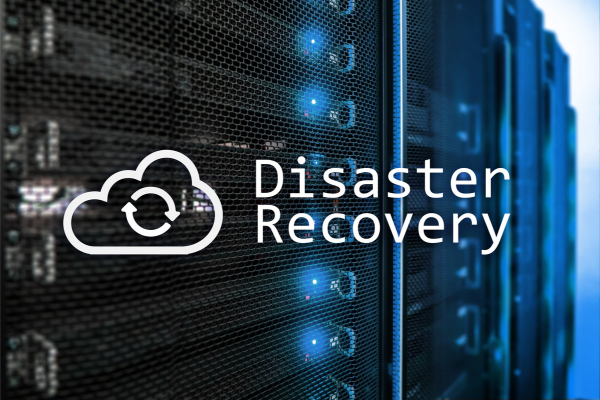Unprepared and Vulnerable: Understanding Disaster Recovery Planning, Risks, DRaaS, and the Benefits of In-House Solutions
By Sandhya Sukumar
Along with the risks of natural disasters, human errors, hardware, and infrastructure failures, one can consider “cyberattacks” as one of the top risks that an organization must prepare for. Hence, Disaster Recovery planning is essential for every business, which comes with its own cost and complexity of developing and maintaining a DR plan that caters to all the top risks and their ongoing evolution as the nature of the risk changes.
While organizations are bound by their financial budget restraints, neglecting any of these risk factors, like having a poor recovery plan and skipping a DR plan is like an open invitation for all kinds of disasters.
What are the five top risks that organizations will most likely face when planning for Disaster Recovery (DR)?
- Absence of a comprehensive disaster recovery plan.
- Selecting an unsuitable data center location.
- Insufficient resources and lack of testing.
- High expenses associated with DR technology.
- Slow response and recovery times.
The absence of a comprehensive disaster recovery plan exposes organizations to vulnerabilities. Creating a plan for complex processes requires a thorough risk assessment, defining critical processes, setting Recovery Time Objectives (RTO) and Recovery Point Objectives (RPO), and incorporating redundancy and failover mechanisms.
Selecting an inadequate data center location can be disastrous for organizations if you are unable to quickly get the secondary site up and running when the primary site is down. Ensuring geographical diversity to avoid shared outages and managing the expenses of cutting-edge infrastructure and skilled personnel is crucial for effective disaster recovery.
Insufficient resources and limited testing due to budget constraints and a small DR workforce can lead to higher risks and extended downtime during disasters. To tackle these challenges, businesses must allocate sufficient resources for an effective DR plan and establish a routine testing schedule.
High expenses associated with DR technology often impede organizations from enhancing their disaster recovery planning. Establishing an effective DR plan requires advanced technology-driven infrastructure, which can be costly to maintain.
Slow response and recovery times can result in prolonged downtime, reduced productivity, and financial repercussions for businesses. Having experienced personnel at the secondary site is vital for promptly initiating failover processes.
Does a shortcut exist for Streamlined Disaster Recovery Planning?
Disaster Recovery as a Service (DRaaS) presents an ideal shortcut solution for companies facing limited staff and tight budgets. It is a cloud-based solution provided by third-party cloud service providers to help businesses implement and manage their disaster recovery strategies. DRaaS allows organizations to replicate and store critical data, applications, and systems in the cloud. In the event of a disaster or disruption, DRaaS enables rapid failover and recovery of IT services, minimizing downtime and ensuring business continuity.
With DRaaS, businesses can avoid the need to invest in and maintain dedicated off-site disaster recovery infrastructure, as they can pay for the services they use on a subscription or pay-as-you-go basis. This cloud-based approach simplifies the complexities of traditional disaster recovery planning and execution while providing scalability, cost-effectiveness, and increased reliability.
What are the benefits of creating your own DR Plan?
Having your own Disaster Recovery (DR) plan offers organizations greater control, customization, and potential cost savings in the long term. Tailoring the plan to specific requirements, processes, and infrastructure ensures an efficient recovery strategy. If the organization already has suitable infrastructure and skilled personnel, an in-house DR plan may lead to cost-effectiveness over time. Additionally, compliance with data privacy and security regulations in specific industries or jurisdictions can be assured through full control over the disaster recovery process.
How can you create a Cybersecurity disaster recovery plan?
Some key steps toward the development of a Cybersecurity Disaster Recovery plan include:
- Choose a Plan Owner:
The cybersecurity disaster recovery plan should have a designated owner responsible for leading the recovery process. Ensuring accessibility of the plan owner during an incident is crucial for business continuity.
- Identify Critical Assets:
Business continuity relies on the availability of essential assets for maintaining operations. Identifying critical assets is fundamental to developing protection and restoration plans.
- Determine Risks:
Different critical assets may face diverse risks, such as ransomware attacks or power outages. Identifying and documenting these risks enables effective plans for addressing and minimizing them.
- Develop Strategies:
A comprehensive disaster recovery strategy should include plans for backing up critical assets, safeguarding them against risks, responding to incidents, and communicating with key stakeholders. A clear understanding of asset protection and potential challenges helps devise effective risk management strategies.
- Practice and Test:
Conducting practice runs of the disaster recovery plan with key stakeholders and participants before an incident helps ensure preparedness and identify any gaps or errors in the plan. Regular testing ensures that the plan functions as intended, enhancing its effectiveness.
If you need assistance in initiating or updating your Disaster Recovery planning, Idenhaus is here to help. As cybersecurity experts, we can guide you in staying ahead of potential threats. Contact us today to begin your journey toward a robust Disaster Recovery strategy.







